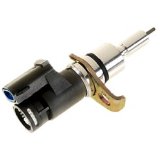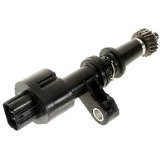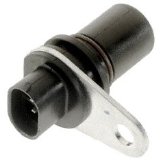This sensor actually tells the computer vehicle speed in kilometers and miles per hour. Speed is an important input to many output controls such as torque converter clutch lock up and the proper flow of EGR gases. The information that is sent from speed sensor is used for other systems, such as cruise control, fuel and spark management that can have affects on fuel economy if the information from the component is incorrect.
Where is the VSS located?
Find Your Online Car Repair Manual Today! ->>
On rear wheel drive trucks and cars you can also find this component mounted in the rear differential. On some models you will find more than one speed sensor. One located in the transmission that can provide information to the transmission module. And one mounted in the differential that will send signals to instrumentation such as the speedometer.
Although ABS braking systems use wheel speed sensors they often compare them to information received from the main VSS to make decisions about braking and wheel lock up. This is why I always recommend that you check a component location diagram and a good service manual. As cars have evolved from the mid-80s this is one component that has changed its form, capabilities and physical location over the years.
Diagnosing speed sensors
You should find the same voltage at the PCM as you did directly at sensor. The internal resistance of the speed sensor can also be tested and compared with the manufacturer’s specifications in the case of a true terminal sensor the resistance is measured across the two terminals. The typical range for a good component is anywhere from 800 to 1400 ohms of resistance. Again check your service manual for the exact specifications any readings outside of these parameters indicates that the part should be replaced.
Another method that is commonly used by technicians would be to have a scan tool connected to the vehicle diagnostic port. Specifically one that is capable of reading the data stream. The scan tool that I am recommending in a low price range (about 75 bucks) that is still capable of performing this operation is the Equus 3040 scan tool. With vehicle speed selected from the data stream you can wrote test the vehicle and have a partner monitor the speed and not only output volts but also miles per hour. Any sudden fluctuations or drops to zero can indicate a true problem exists in the system.
As time allows I will write additional helpful articles that cover the specific component. Until then you can head on back to the auto repair blog home page for more of the latest articles about auto repair.









